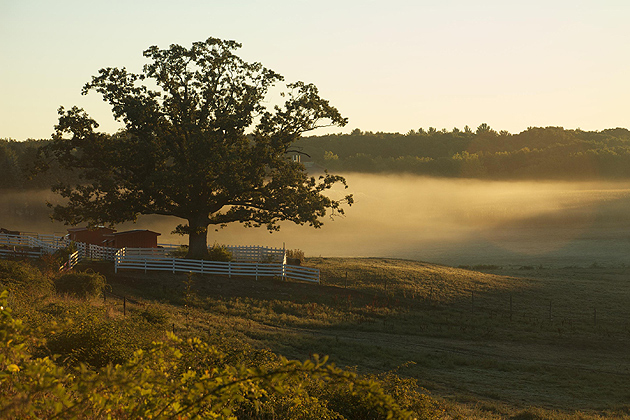While no place on Earth could match his native rural Virginia, Thomas Jefferson adored nature in all of its complexity and fluidity. He was also famous for his architectural talents, as well as his choice of settings – for instance, Monticello, the home he designed for himself in Charlottesville, Va.
I just wish he were here today to help articulate our good real

estate fortune, bestowed upon us by the Storrs brothers in 1881. In particular, our nation’s third president understood the relationships among pastoral America, democracy, and intellectual life.
As the historian Garry Wills wrote in his very fine book, Mr. Jefferson’s University:
“Though Jefferson’s university [the University of Virginia] was original in many ways, it was also the fulfillment of a dream long cherished on this continent – the hope for a university fitted to the distinctive American experience, one that would negotiate a new relationship with nature in the New World. European universities had been urban, dotted about in the interstices of a great city like Paris, or monastic, sealed up on gated quadrangles like those at Oxford and Cambridge. American schools, from the beginning, were open to the countryside, looking out on lawns or greens or yards or ‘areas’ – on the long village mall stretching out before the Wren Building in Williamsburg, or on ‘the field’ (Latin campus) before Nassau Hall at the College of New Jersey (later Princeton). Princeton’s word for its ‘campus’ would at last be adopted by colleges to indicate their entire plat, but its original meaning shows that our first colleges wanted to address and respond to open space.”
Our own campus, here in Storrs, Conn., remains a reflection of that early American dream for a university.

Surrounded by a picturesque landscape that resonates with these ideals of openness, of nature untouched, we are blessed with the splendor of Horsebarn Hill, historic stone walls, as well as acres of peaceful forest, scenic hiking trails, and a state park, all nearby. Consider, too, the impressive collection of trees across our main campus; while some are notable for their size, others for their rarity, many of them are actively used for classroom instruction. They serve as dignified teachers in this outdoor classroom of ours, inviting us to remarkably beautiful spots where we can pause and reflect.
Ensuring that we maintain this natural beauty around us, even as our campus evolves, is essential. From improving signage to preserving spaces for pedestrians to finding ways to integrate learning opportunities into future plans for the campus grounds, our own Campus Appearance Committee has taken on the task of enhancing even our highest-traffic areas to complement the broader landscape.
At the same time, our University remains dedicated to building an ever-greener campus. Over the past year, UConn has been named one of the greenest schools in the nation as well as one of the world’s most eco-friendly campuses. We have also recently expanded our Climate Action Plan, a plan designed to reduce UConn’s carbon footprint. With more energy-efficient facilities, increased biodiesel production to fuel our fleet of buses, and a new fuel cell power plant installed this past April on our Depot campus, our Storrs campus intends to be carbon-neutral by 2050.
Being good stewards of the environment and doing all that we can to bring out the best in our campuses are endeavors crucial to any great University. Yet conservation and aesthetics are still only a part of the bigger picture.
Putting the time and energy into enhancing our grounds speaks volumes about the

University. Such efforts signify a community that has pride in itself and its programs, while rewarding us with a vibrant natural landscape that fosters inspiration and intellectual growth.
The Storrs brothers themselves would have undoubtedly appreciated this connection between nature and learning. After all, the very foundation of our University is rooted in agriculture. The Storrs Agricultural School evolved out of the Morrill Act of 1862, which first established America’s land-grant system of education. With this year marking the 150th anniverary of that historic legislation, perhaps we have all the more reason to keep in mind the value of enhancing the scenic spaces that serve us today and that will surely benefit many future members of the UConn community in the years to come.
I believe Jefferson – who declared politics his “duty,” but nature his “passion” – would have surely agreed.



